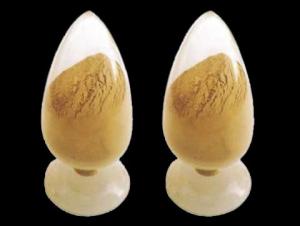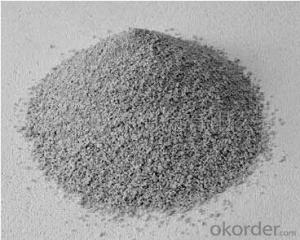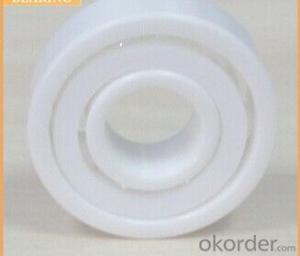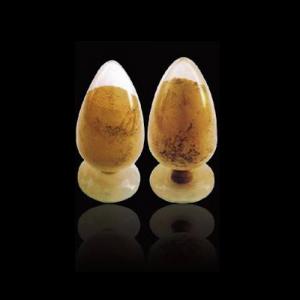Magnesium Calcium Gunning for Ladle and Tundish
- Loading Port:
- China Main Port
- Payment Terms:
- TT or L/C
- Min Order Qty:
- 2 MT m.t.
- Supply Capability:
- 5000 Tons Per Month m.t./month
OKorder Service Pledge
OKorder Financial Service
You Might Also Like
General Information of Magnesium Calcium Gunning for Ladle and Tundish
Made as per international standards, ALRE magnesium calcium gunning forladle and tundish is known for its excellent corrosion resistance, long operating life and high refractoriness.
Technical data of Magnesium Calcium Gunning for Ladle and Tundish
Item | Magnesium Calcium Gunning | |||
CPL-1 | CPL-2 | |||
Al2O3(%)≥ | — | — | ||
MgO(%)≥ | 75-80 | 70-80 | ||
CaO(%)≤ | 5-10 | 2-10 | ||
SiO2(%)≤ | 4 | 10 | ||
SiO2+ Fe2O3+ Al2O3(%)≥ | ||||
Bulk Density (g/cm3)≥ | — | — | ||
C.C.S. (MPa) ≥ | 110℃×24hrs | — | — | |
1500℃×3hrs | — | — | ||
M.O.R.(MPa) ≥ | 110℃×24hrs | — | — | |
1500℃×3hrs | — | — | ||
Refractoriness (℃) ≥ | 1790 | 1790 | ||
Grain Size (mm) ≤ | — | — | ||
Permanent Linear Change(%) | 1500℃×2hrs | — | — | |
1500℃×3hrs | — | — | ||
Life time (hr) | — | — | ||
Production line and Packing of Magnesium Calcium Gunning for Ladle and Tundish
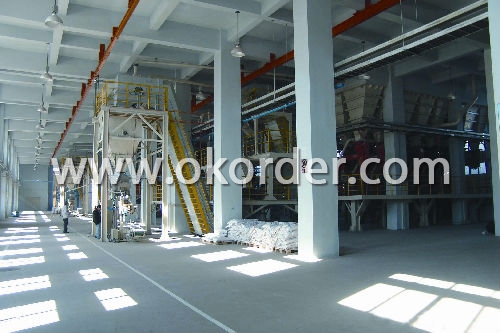
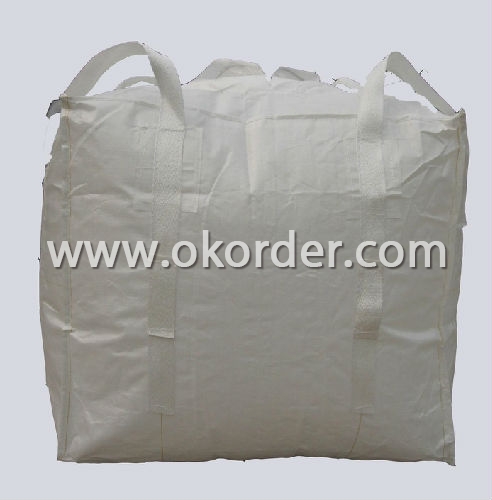
Feature of Magnesium Calcium Gunning for Ladle and Tundish
Long operating life
High refractoriness
Excellent corrosion resistance
Application of Magnesium Calcium Gunning for Ladle and Tundish
ALRE magnesium calcium gunning forladle and tundish can be used widely in steel and iron industry.
- Q:How do monolithic refractories contribute to the efficiency of iron and steel production?
- Monolithic refractories play a critical role in improving the efficiency of iron and steel production processes. These refractories are renowned for their superior thermal properties, high resistance to mechanical stress, and outstanding resistance to chemical corrosion. One primary manner in which monolithic refractories enhance the efficiency of iron and steel production is by providing effective insulation. By lining furnaces and other high-temperature equipment, monolithic refractories prevent heat loss and ensure consistent maintenance of desired temperatures. This insulation helps reduce energy consumption by minimizing heat wastage, ultimately resulting in cost savings. Moreover, monolithic refractories offer exceptional resistance to thermal shock. In the iron and steel industry, frequent heating and cooling cycles are common, and conventional refractory materials may crack or fail under these conditions. However, monolithic refractories can endure rapid temperature fluctuations without failure, guaranteeing the longevity and reliability of the refractory lining. This resistance to thermal shock reduces downtime for repairs and maintenance, thereby increasing overall production efficiency. Furthermore, monolithic refractories exhibit significant resistance to chemical corrosion. In iron and steel production, various corrosive substances such as molten metal, slag, and gases are present. By utilizing monolithic refractories as lining materials, the underlying structures are protected from chemical attack, preventing erosion and prolonging the equipment's service life. This corrosion resistance reduces the need for frequent repairs or replacements, leading to cost savings and enhanced productivity. Additionally, monolithic refractories offer easy installation and repair. Unlike traditional refractories, which are often constructed brick by brick, monolithic refractories are applied as a single mass. This allows for faster installation and reduces the potential for weak points or joints that may compromise the overall efficiency of the refractory lining. Furthermore, when repairs or maintenance are necessary, monolithic refractories can be easily patched or replaced, minimizing downtime and ensuring seamless operation. To summarize, the use of monolithic refractories in iron and steel production contributes to increased efficiency in multiple ways. Their outstanding thermal insulation properties reduce energy consumption, while their resistance to thermal shock and chemical corrosion ensures reliable and long-lasting refractory linings. Additionally, their easy installation and repair capabilities further enhance productivity. Overall, monolithic refractories are an indispensable component in improving the efficiency and sustainability of iron and steel production processes.
- Q:How do monolithic refractories resist chemical attacks from molten metals and slag?
- Monolithic refractories resist chemical attacks from molten metals and slag due to their high chemical stability, which is achieved through the use of carefully selected raw materials and advanced manufacturing processes. These refractories are designed to have low porosity, which prevents the penetration of molten metals and slag into the material. Additionally, they possess high resistance to corrosion and erosion, even at high temperatures, allowing them to withstand the harsh chemical environments created by molten metals and slag.
- Q:What are the advantages of using insulating castables in the iron and steel industry?
- The advantages of using insulating castables in the iron and steel industry are numerous. Firstly, insulating castables have excellent thermal insulation properties, which help to reduce heat loss during the manufacturing process. This leads to increased energy efficiency and cost savings for the industry. Additionally, insulating castables have a low thermal conductivity, meaning they can withstand high temperatures without transferring excessive heat. This is crucial in the iron and steel industry, where temperatures can reach extremely high levels. By using insulating castables, the industry can ensure the longevity and durability of its equipment and structures. Furthermore, insulating castables have good resistance to thermal shock, meaning they can withstand rapid temperature changes without cracking or breaking. This is particularly beneficial in the iron and steel industry, where the heating and cooling processes are frequent and intense. Lastly, insulating castables have a low density, making them lightweight and easier to handle and install. This not only saves time and effort during installation but also reduces the structural load on equipment and structures. Overall, the use of insulating castables in the iron and steel industry offers advantages such as improved energy efficiency, enhanced durability, resistance to thermal shock, and ease of installation.
- Q:What are the advantages of using monolithic refractories in the iron and steel industry?
- Monolithic refractories offer several advantages in the iron and steel industry. Firstly, they provide excellent thermal insulation, helping to maintain high temperatures within the furnaces and kilns, ensuring efficient and consistent production processes. Secondly, monolithic refractories have high resistance to thermal shock and mechanical stress, making them durable and long-lasting in harsh operating conditions. Additionally, their ability to be easily shaped and installed reduces downtime during maintenance or repairs. Lastly, monolithic refractories have good chemical resistance, protecting against corrosive elements present in iron and steel production, thereby enhancing the overall performance and productivity of the industry.
- Q:What are the typical applications of monolithic refractories in the iron and steel industry?
- Various applications within the iron and steel industry widely utilize monolithic refractories. These refractories, composed of a single material, offer numerous advantages including easy installation, thermal shock resistance, and excellent resistance to chemical attacks. Below are some typical applications of monolithic refractories in the iron and steel industry: 1. Blast Furnace: In blast furnaces, monolithic refractories line the interior and endure extreme temperatures and chemical reactions. They provide thermal insulation, prevent erosion, and resist the corrosive effects of molten iron and slag. 2. Ladles and Tundishes: Monolithic refractories line ladles and tundishes, vessels used for transporting and transferring molten metal. These refractories offer effective thermal insulation and resistance to erosion and chemical attacks, ensuring the integrity of the vessels. 3. Steelmaking Converters: Converters, essential in the steelmaking process to convert molten pig iron into steel, utilize monolithic refractories. These refractories provide protection against high temperatures and aggressive chemical environments encountered during the process. 4. Electric Arc Furnaces (EAF): Monolithic refractories line the walls and roofs of EAFs, used to recycle scrap steel by melting it. These refractories offer outstanding thermal insulation, resistance to slag erosion, and thermal shock resistance, ensuring the longevity and efficiency of the furnace. 5. Continuous Casting: Monolithic refractories find employment in the continuous casting process, where molten steel solidifies into a continuous slab or billet. These refractories line the walls and floors of the casting molds, providing thermal insulation and resistance to chemical attacks from the molten steel. 6. Reheating Furnaces: Monolithic refractories are used in reheating furnaces, which heat steel billets or ingots prior to further processing. These refractories provide insulation, high-temperature resistance, and ensure uniform heating of the metal. Overall, monolithic refractories play a crucial role in the iron and steel industry by providing reliable and durable linings in various applications. Their ability to withstand extreme temperatures, chemical attacks, and thermal shocks makes them indispensable for maintaining the integrity and efficiency of the production processes.
- Q:How do monolithic refractories withstand the mechanical impacts in ladle lip applications?
- Monolithic refractories are able to withstand the mechanical impacts in ladle lip applications due to their unique properties and composition. Firstly, monolithic refractories are made from a single, homogenous material, which provides them with a high level of structural integrity. This means that they are less vulnerable to cracking or breaking when subjected to mechanical impacts. Additionally, monolithic refractories often contain additives such as fibers or aggregates, which further enhance their resistance to mechanical stresses. These additives help to distribute the forces applied to the refractory material, reducing the concentration of stress points and increasing its overall durability. Furthermore, the application process of monolithic refractories allows for a seamless and continuous lining, eliminating the presence of joints or weak points that are susceptible to mechanical damage. This ensures a more uniform distribution of the impacts and enhances the material's ability to withstand them. Moreover, monolithic refractories can be designed with specific compositions and formulations that are tailored to resist mechanical impacts. Various binders and additives can be incorporated to enhance the material's toughness, impact resistance, and overall mechanical strength. Finally, the selection of monolithic refractories for ladle lip applications also takes into consideration the operating conditions, such as temperature and chemical exposure. By choosing refractories that are suitable for these conditions, their mechanical properties can be optimized to withstand the specific challenges posed by ladle lip applications. In summary, monolithic refractories are able to withstand mechanical impacts in ladle lip applications due to their homogenous structure, the inclusion of additives, the seamless application process, and the ability to customize their composition. These factors contribute to their ability to resist cracking, breaking, and other forms of mechanical damage, ensuring their longevity and effectiveness in ladle lip applications.
- Q:How do monolithic refractories resist erosion from molten metals and slags?
- Monolithic refractories resist erosion from molten metals and slags through several mechanisms. Firstly, they have a high melting point, which allows them to withstand the high temperatures of molten metals and slags without any significant degradation. Secondly, they have a dense and compact structure, which reduces the penetration of molten metals and slags into their surface. Additionally, monolithic refractories often contain additives such as antioxidants or slag resistance agents, which further enhance their resistance to erosion.
- Q:What are the common testing methods used to evaluate the performance of monolithic refractories?
- The common testing methods used to evaluate the performance of monolithic refractories include thermal conductivity testing, hot modulus of rupture testing, abrasion resistance testing, thermal shock resistance testing, and corrosion resistance testing.
- Q:How do monolithic refractories perform in rotary hearth furnace applications?
- The performance of monolithic refractories in rotary hearth furnaces is well-known. These refractories are specifically designed to endure the extreme temperatures and harsh conditions found in these furnaces, making them the ideal choice for this particular application. One major advantage of monolithic refractories is their resistance to thermal shock. In rotary hearth furnaces, the material being processed is subjected to rapid heating and cooling cycles, which can cause significant stress on the refractory lining. Monolithic refractories have excellent thermal conductivity and low thermal expansion, enabling them to withstand these temperature fluctuations without cracking or spalling. Another important characteristic of monolithic refractories is their exceptional resistance to abrasion. In rotary hearth furnaces, the material being processed may contain abrasive particles that can wear down the refractory lining over time. Monolithic refractories are formulated with high-quality aggregates and binders that provide superior abrasion resistance, resulting in a longer lifespan for the lining. Moreover, monolithic refractories exhibit good chemical resistance, making them suitable for various applications in rotary hearth furnaces. They can withstand exposure to different chemical substances, such as molten metals, slags, and gases, without undergoing significant chemical reactions or degradation. This chemical stability ensures that the refractory lining remains intact and performs well in the demanding environment of a rotary hearth furnace. Additionally, monolithic refractories offer excellent flexibility during installation. Unlike traditional brick or tile refractories, which require complex installation procedures, monolithic refractories can be easily shaped and applied in-situ using methods like gunning, casting, or ramming. This flexibility allows for quicker and more efficient repairs or replacements of the lining, reducing downtime and maintenance costs. In conclusion, monolithic refractories are highly reliable and efficient in rotary hearth furnace applications. Their ability to withstand thermal shock, abrasion, and chemical attack, along with their easy installation, make them the preferred choice for lining materials in these demanding environments.
- Q:How are monolithic refractories used in the repair and maintenance of ladle and tundish linings?
- Monolithic refractories are a type of refractory material that is commonly used in the repair and maintenance of ladle and tundish linings in the steel industry. These linings are crucial components of ladles and tundishes, which are used for the transportation and treatment of molten metal during the steelmaking process. When ladle and tundish linings are subjected to high temperatures and corrosive environments, they can deteriorate over time. This deterioration can lead to various issues such as heat loss, contamination of molten metal, and reduced refractory lining lifespan. To address these problems, monolithic refractories are used as repair and maintenance materials. Monolithic refractories are typically made from a combination of different refractory aggregates, binders, and additives. They are available in various forms, such as castables, gunning mixes, and ramming mixes. These materials are designed to be easily applied and shaped to conform to the specific geometry and dimensions of the ladle or tundish lining. During the repair process, the damaged areas of the lining are removed, and the monolithic refractories are then applied to these areas. Castables can be poured and vibrated into place, while gunning mixes can be sprayed using a high-pressure gunning machine. Ramming mixes, on the other hand, are manually compacted into the lining using a ramming tool. Monolithic refractories offer several advantages in the repair and maintenance of ladle and tundish linings. Firstly, their flexibility allows for easy installation and shaping, ensuring a snug fit to the lining. This helps to maximize the effectiveness of the refractory lining in preventing heat loss and maintaining the integrity of the ladle or tundish. Secondly, monolithic refractories have excellent thermal shock resistance and resistance to chemical attack. This makes them highly durable and capable of withstanding the harsh conditions encountered in ladles and tundishes. They can withstand repeated heating and cooling cycles without cracking or spalling, providing long-lasting protection to the lining. Lastly, monolithic refractories can be easily repaired and replaced when necessary. Their application and removal processes are relatively straightforward, allowing for efficient maintenance of ladle and tundish linings. This helps to minimize downtime and maintain the overall productivity of the steelmaking process. In conclusion, monolithic refractories play a crucial role in the repair and maintenance of ladle and tundish linings. Their ease of application, excellent thermal shock resistance, and resistance to chemical attack make them ideal materials for extending the lifespan and optimizing the performance of these linings in the steel industry.
1. Manufacturer Overview |
|
|---|---|
| Location | Henan, China |
| Year Established | 2007 |
| Annual Output Value | Above US$ 200 Million |
| Main Markets | North America;Asia;Western Europe;Africa;Russia;Middle East |
| Company Certifications | ISO 9001:2008 |
2. Manufacturer Certificates |
|
|---|---|
| a) Certification Name | |
| Range | |
| Reference | |
| Validity Period | |
3. Manufacturer Capability |
|
|---|---|
| a)Trade Capacity | |
| Nearest Port | Tianjin |
| Export Percentage | 20% - 30% |
| No.of Employees in Trade Department | 10-20 People |
| Language Spoken: | English; Chinese |
| b)Factory Information | |
| Factory Size: | Above 150,000 square meters |
| No. of Production Lines | Above 10 |
| Contract Manufacturing | Installation guide, OEM Service Offered |
| Product Price Range | High; Average |
Send your message to us
Magnesium Calcium Gunning for Ladle and Tundish
- Loading Port:
- China Main Port
- Payment Terms:
- TT or L/C
- Min Order Qty:
- 2 MT m.t.
- Supply Capability:
- 5000 Tons Per Month m.t./month
OKorder Service Pledge
OKorder Financial Service
Similar products
New products
Hot products
Related keywords






















